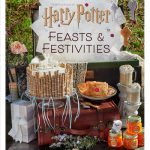#LeakyFantasticGiveaway Winners & Runners-Up!
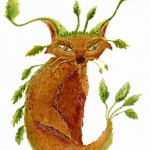
Feb 23, 2017
Contests, Fan Sites, Fantastic Beasts Movie, Fun, Fun - Contests, Honors/Awards, Leaky, News, Products
As you may remember, The Leaky Cauldron recently hosted a Fantastic Beasts giveaway, and we’re finally bringing you news of the winners!
The instructions were to draw (with accompanying description and/or annotations) or write a description of a fantastic beast entrants had “discovered” in their travels as professional Magizoologists.
After a lot of deliberation and regretting the fact that we couldn’t give most of the entries a prize (there were a lot, we want to stress just how amazing our readers are at drawing and writing!), our two winners gave very different entries that showed how much they understood their beasties.
WINNER ONE: JoAnne (Joni) Russell
This entry won for a variety of reasons . The illustration (below) is absolutely stunning, and deserves to be in a book! The story behind the Vulpecufoilia is wonderfully tied to Joni’s Hufflepuff roots, and – after a little Googling and speculation – we found that Vulpecufolia is actually a mash-up of the ‘Vulpecula’ constellation, and ‘Folia’ meaning ‘foliage’, linking to the creature’s medicinal leaves. The creativity in this entry made us feel like we were reading something actually from Potter, congratulations Joni!
The entry is as follows:
“Having been educated as a Hufflepuff, I listened to many stories of magical healing plants and creatures, including those non-native to England. One of the stories that fascinated me most was that of the Vulpecufolia. The story went that Webster Boot brought Vulpecufolia leaves with him from Massachusetts to England. He had been given the leaves by Josephina Calderon (the healing wife of of his brother.) These leave had powerful medicinal properties, greater even than that of the snakewood tree. What fascinated me most was that the leaves came from a magical creature – not a plant! I decided to travel to Massachusetts myself to discover whether such a creature existed. After many months I found an elderly woman willing to share her knowledge. She told me of the legends of a fox-like creature who sprouted medicinal leaves. It was rumored that these creatures still roamed the woods at Mount Greylock. Determined to see for myself, I lived in the woods day and night. I was rewarded one summer evening with a siting of a Vulpecufolia. Knowing they have a fondness for honey, I dotted a trail closer and closer to myself. At the end of 18 months, I was trusted by one particular Vulpecufolia, and she shared some of her prized leaves with me. These prized leaves are most valued for use as a tonic for relief from the cruciatus curse.
I enclose my rendering of that Vulpecufolia for you.”


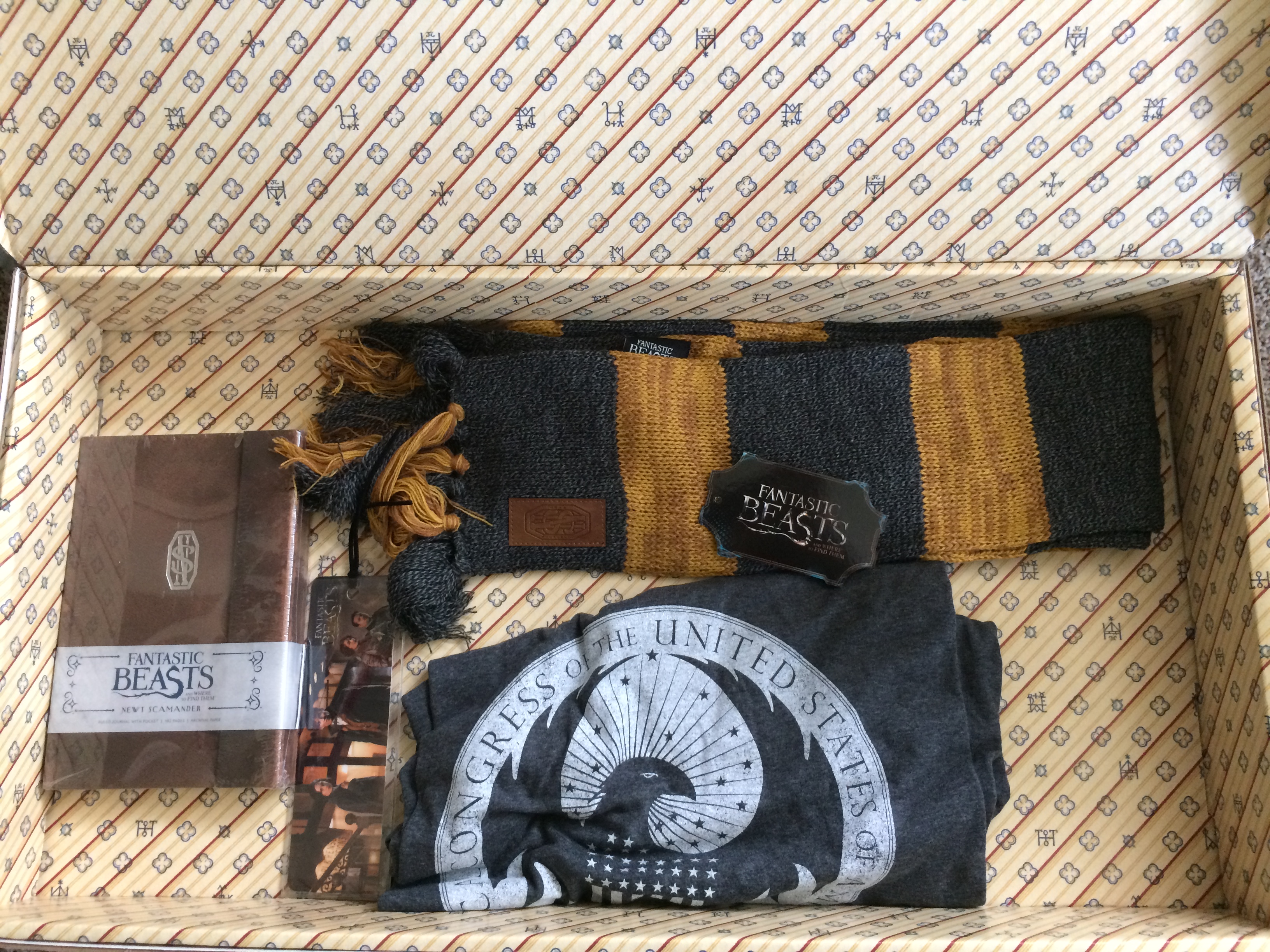

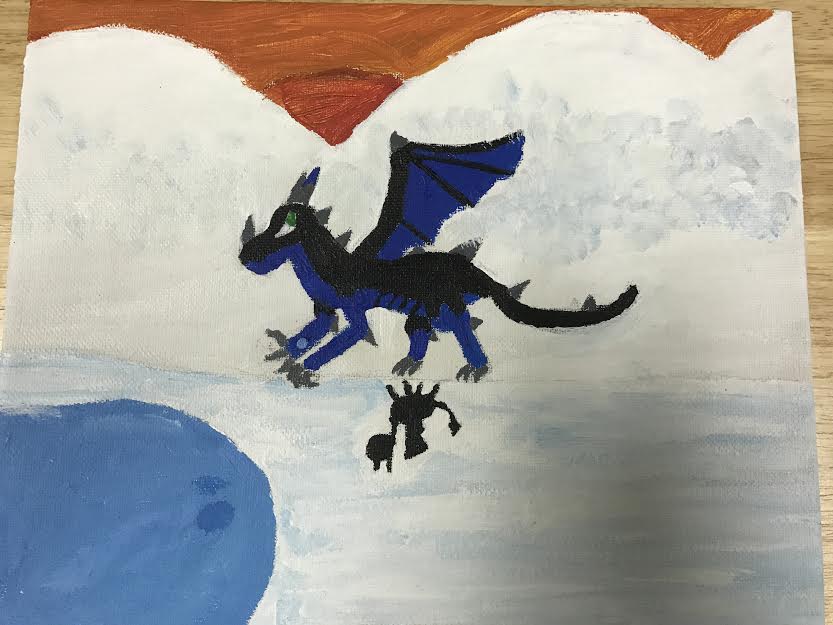
“The creature named Benjiman lives only in Belgium. The Benjiman is only found in the parks. It has never left Belgium because it is scared to leave. It lives next to the benches by the fountains. There are fountains in about every park in Belgium. The Benjiman sits by the benches until someone comes to pet it.
[…]
They love to eat birds because they are all over the parks in Belgium. That is the only thing it eats. It is safe to have as a pet, but usually, people don’t have them as pets. Its favorite thing to do is play with people in the park. It loves to be in the park. If hurt and someone rescues it, the Benjiman will stay with its owner and it is very loyal.”
Another important thing is that the Benjiman has only one magical ability. Its magical ability appears only when needed to protect its owner. The Benjiman follows its owner around after it is rescued. The Benjiman is not normally aggressive but will attack if its owner is in danger. When their owner is attacked, the Benjiman extends foot-long, red claws. This is the only time the claws appear. The claws go away when its owner is safe.”

The Ffuuffy, by Josh:
“The fluff of the FFUUFFY never gets wet. If the FFUUFFY is shaved for its fur, it instantly grows back but it makes the FFUUFFY very weak. If shaved too much, it could kill it. There are potions to make the FFUUFFY more fluffy.
[…]
The fluff of the FFUUFFY is so fluffy that it looks like there is too much fluff. The FFUUFFY has the fluff of a Puffskeins, the tail of a pig the retractable fangs of a viper, retractable webbed feet, a body of a german Sheppard, and the head of a cat. The FFUUFFY is very protective of its owners and its friends. The FLUFFY head is gray. With its fluff mixed with black and brown and a fuzzy pink curled tail. It will live around 60-70 years. It takes a while to domesticate the FFUUFFY, about 5-10 years. The size and weight range for the FFUUFFY are about 14-17 pound and 8 inches in height. The fluff of the FFUUFFY will always stay fluffy. The FFUUFFY is an omnivore and also eats insects but there is a potion that is a treat for a the FFUUFFY.”
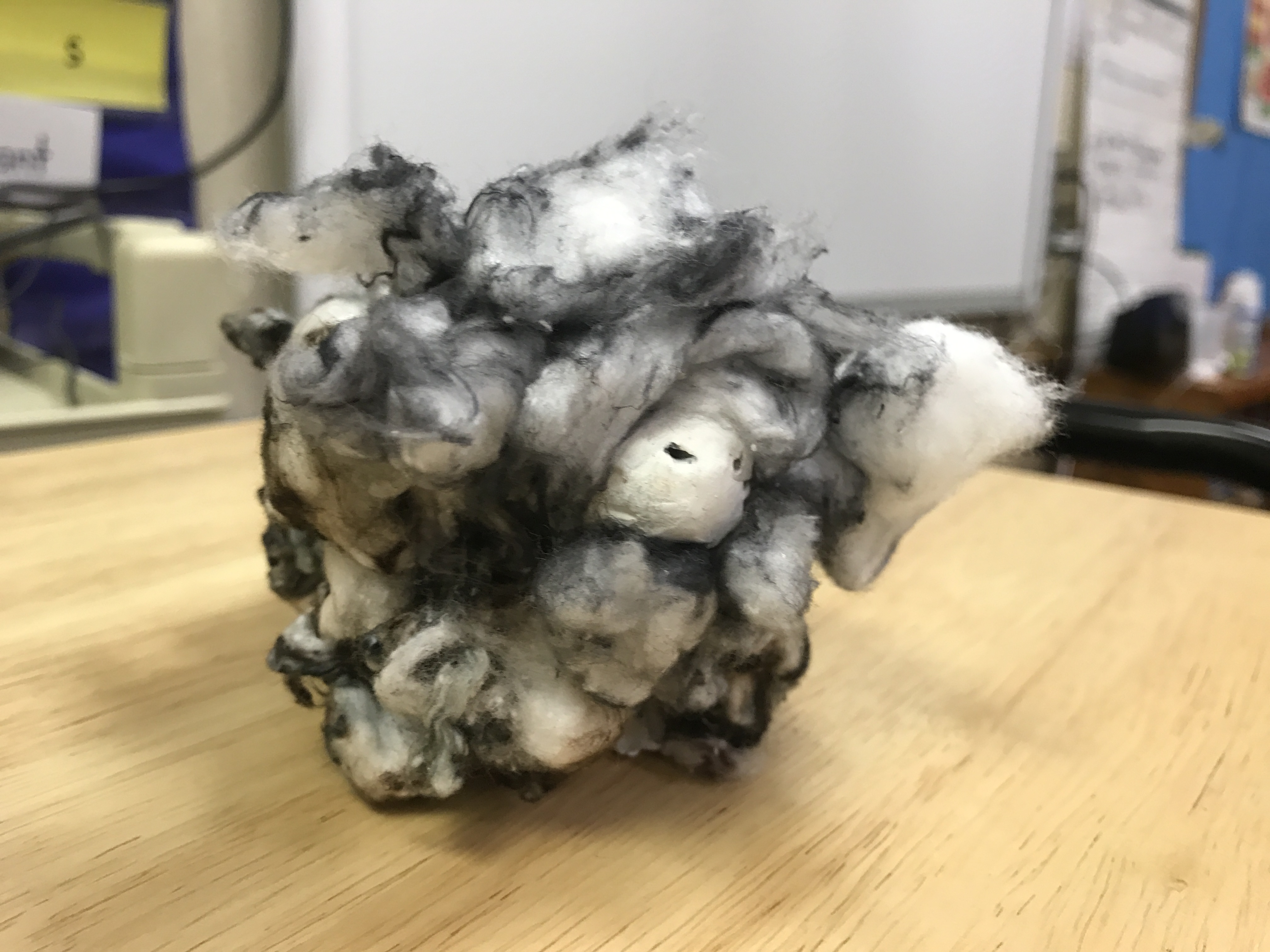
The Mutanus, by Rebecca:
“The Mutanus’ originated from the Latin word for shape shifter. The Mutanus resembles a two ton, 12 feet long grizzly bear. The Mutanus’s fur is dark brown and very thick. The Mutanus mood is almost always calm even when encountered with a wizard or witch. When defending its cub becomes very very aggressive and will use its fire breathing to burn you. There have only been a few accounts of wizards escaping from an enraged Mutanus. The Mutanus can be silent and usually chooses to be but if it is high enough in the mountains it doesn’t matter as much and can walk normally. The Mutants eat mountain goats because they usually goes very high into the mountains and that’s the only thing up that high.
[…]
The Mutanus lives in the high mountains of Alaska and Canada. The Mutanus usually digs dens to sleep in much like a real grizzly bear would, but can also climb high into redwood trees. Then digging its large claws into the tree so it won’t fall off and it can sleep there. It appears like its hugging the tree. When the Mutanus finds a mate they will then stay together through their lives even when their cub or cubs leave.
A final important factor is the Mutanus’s magical abilities. One of the magical abilities the Mutanus has is fire breathing which is usually used to defend itself and not catch prey. The Mutanus is a very fair beast and believes it should not overuse its abilities. Another magical ability is shapeshifting. The Mutanus usually shapeshifts into a mountain goat to sneak up on its prey, and then it pounces and uses its enormous, retractable claws to attack it.”
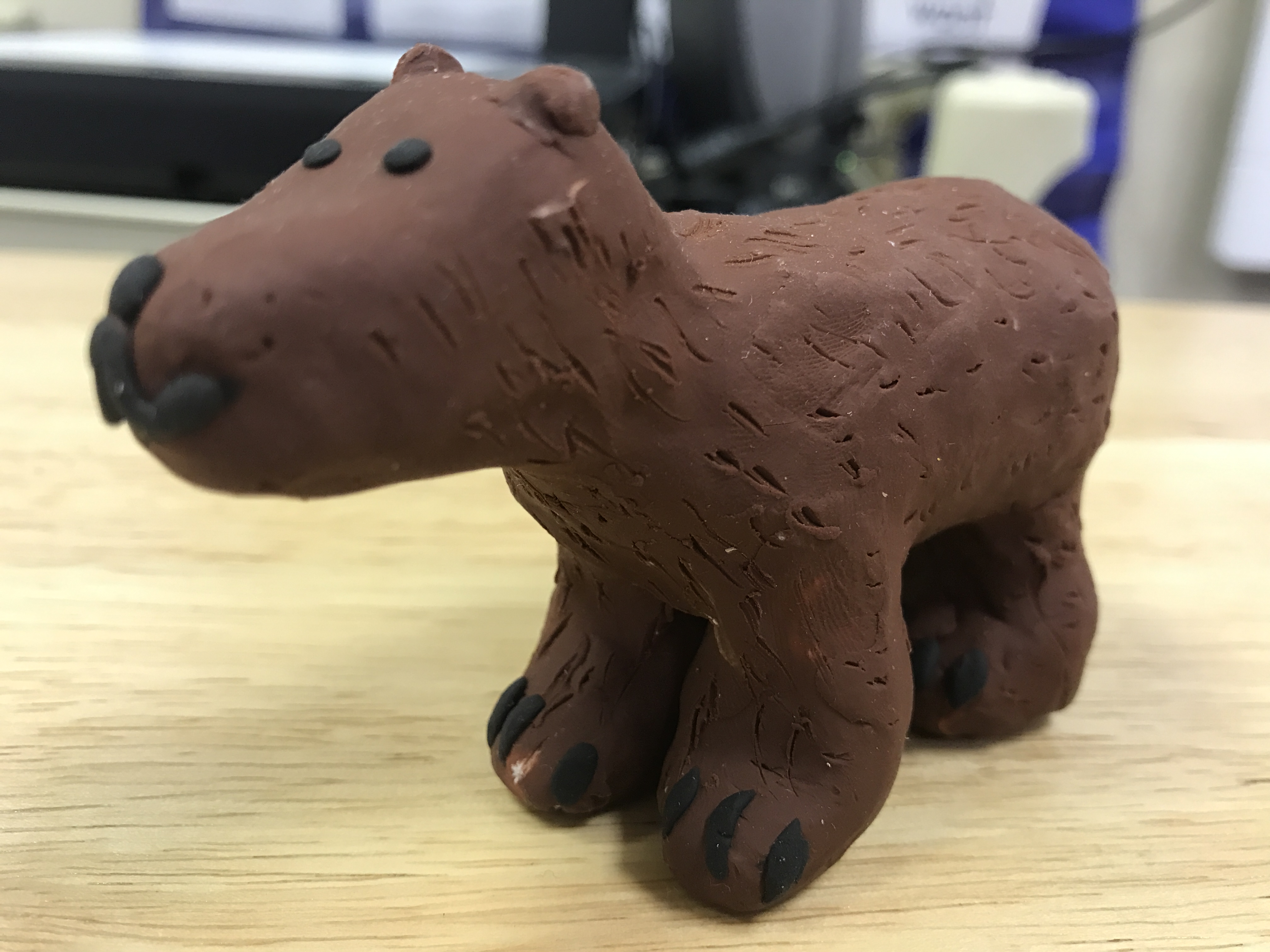
The Peruvian Iron-Snout Deathtail, by Jonah.
“The Peruvian Iron-Snout Deathtail was created by crossbreeding a Peruvian Vipertooth, an Ukrainian Ironbelly, a Swedish Short-snout and a Hungarian Horntail by Voldemort to serve as a pet. Its scales are a mixture of black, gold, blue, red, white, and silver. Iron like armored scales around its body with fire covering its body when it’s awake also has large golden spikes on its tail. Its size is around 170 ft long, although it cannot be measured as it is too dangerous to get close to for accurate measurements. It approximately weighs 11 tons, though again this is an estimate. Its egg is glowing gold surrounded by purple flames while floating in the air. No eggs have been gathered yet because the power of the flame instantly kills.
This dragon can either travel at the speed of light by flight or drill underground (by using its spikes as a spinner) drilling at the speed of sound making all the buildings above it collapse. It has an ability that lets it go invisible at will. It uses this ability to protect itself for being hunted. Its flame can burn anything in the blink of an eye. Its flames can also go up to 200 feet. It has been known to control other dragons to get its food. It is unstopable to all wizards. If seen, report to M.O.M.”
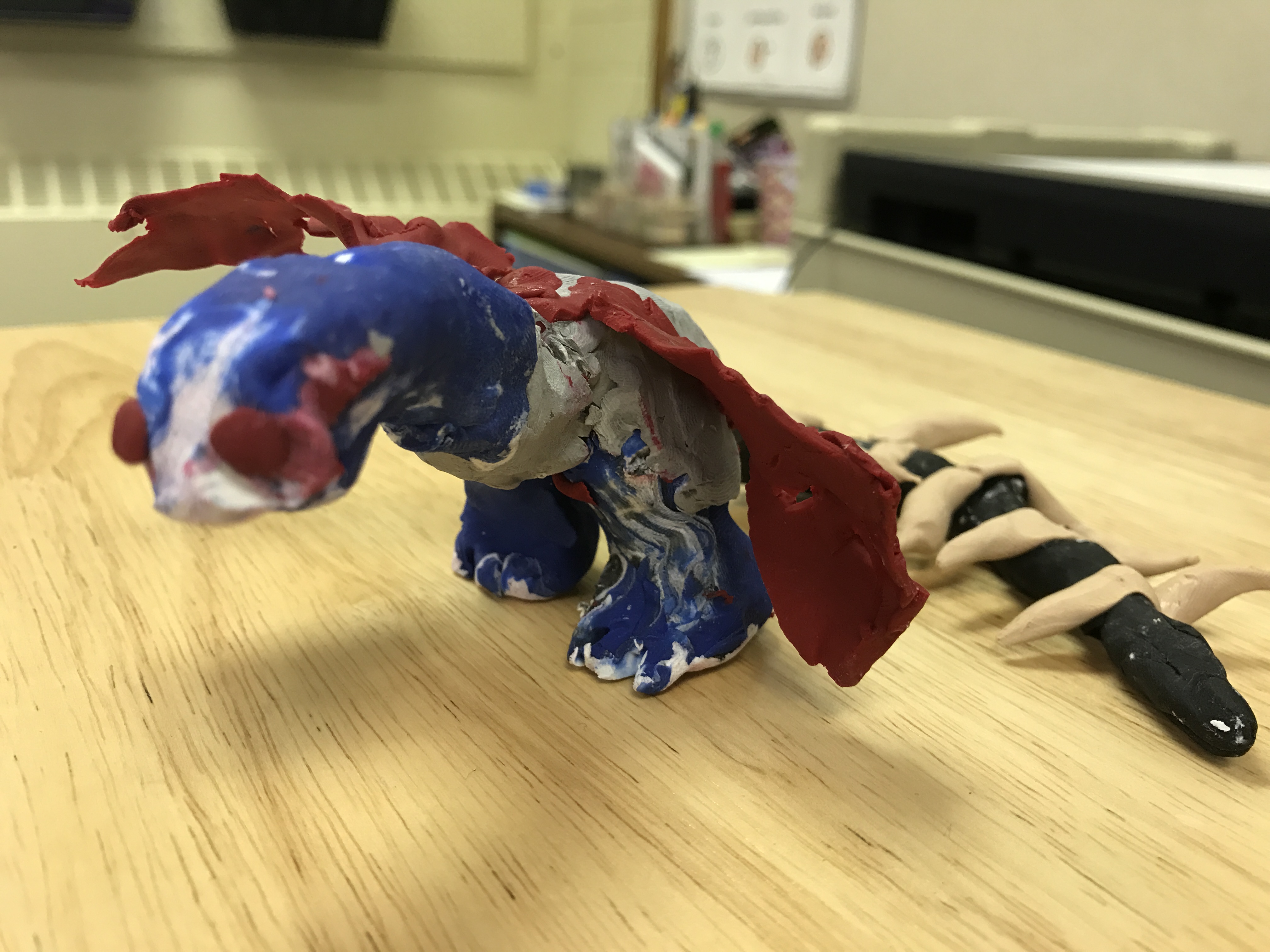
Honourable Mention #2: Isabel Lopez
The art and story behind this beastie (the Humdorviguar) came very close, we love this entry SO much – you’re an amazing artist, Isabel!
“This beast comes originally from Peru, to be specific from the Andes. Many people underestimate this creature´s magical powers, judging it only by its appearance. Despite its cute eyes, Humdorviguar is able to smash a human with ease using a single claw, yet it will protect those who look after it with fierce loyalty. This creature can tolerate a wide range of extreme temperatures from the cold of the arctic to the intense heat near active volcanoes. The feathers of a Humdorviguar shed water which protect it during torrential storms without forcing the beast to seek shelter. This in turn allows it to hunt in conditions where most any other predator would suffer.
As an artist who has travelled many times to Peru, I got my inspiration from its incredible wildlife. The Humdorviguar is a combination of the following animals: The Humboldt penguin (head and beak), the vicuña (eyes and ears), the Andean condor (wings, claws and feathers) and the otorongo (hind legs).
Well-known potion makers are urged to take caution when collecting moulted feathers from the Humdorviguar because of their territorial trait alongwith its sensitive hearing. Furthermore, a fine powder can be extracted from its collar feathers to create a potion called: Audire Ultra which allows you to hear what another person is thinking. “

Honourable Mention #3: Serena Powell
This entry is absolutely striking, we love the detail in the Amacryst – thank you so much for entering the competition, Serena!
“Half crayfish, half horse creature that dwells deep in caves. Amacryst are very dangerous and use their alluring crystals to catch prey.
Amacryst were originally discovered in Mammoth Cave by Native Americans. Due to it being part crayfish and part horse, it is semi-aquatic, meaning it lives on both land and in water. Since it lives deep in the caves, it has adapted to darkness, and therefore has no eyes. For navigation, it uses its antennae to sense its surroundings. Upon its back there are beautiful, blue crystals. Much like an angler fish, it uses the glow of these gems to lure in explorers to eat. Despite the creature using them for nefarious purposes, the crystals can be quite useful in the wizarding world. They have hypnotic properties, and are also often used for Divination.”

Honourable Mention #4: Megan Groh
We loved the creative story behind this entry, the Multimorphillious – thanks so much Megan!
“The Multimorphillious is a small, docile creature prominently found in the northern Appalachian Mountains. They were first discovered along the coast of Greece before magical traders brought them to the Americas to sell as pets. Skins are known to be extremely loyal if cared for properly and given sufficient heat, often from one’s robe pocket.
The original form of Multimorphillious is unknown as it possess the rare and extraordinary ability to change their appearance at will. They do so by shedding or molting the skin of their previous form and emerging as a new creature. It should be noted that this ability is limited only by its size and it cannot transform into anything bigger than a mouse. Unless it is seen during a transition, the Multimorphillious is often mistaken as a common forest animal and is therefore difficult (but not impossible) to find.
One of the more useful properties of a Multimorphillious is its discarded skin as it can be used in potions designed to change one’s appearance. Although these potions are not as potent as the Polyjuice Potion, they do come in handy when a savvy witch or wizard wishes to change their hair or eye color.”

Honourable Mention #5: Abby Allio
The Ilbot [Ee-bot] entry is detailed and has all the marks of a magi-zoologists diary, pretty cool! Thanks Abby!
Click here to see Abby’s entry, and see a snapshot below:
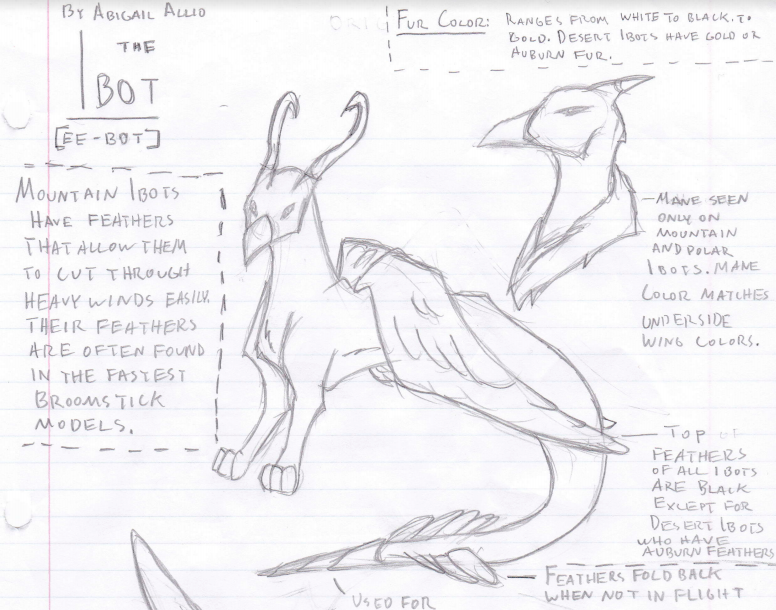
Honourable Mention #6: Sydney Sinclair Fox
This entry went all-out in presentation! We love the acrofluer and think they sound absolutely adorable – thank you Sydney!
“A small, sprite like creature that resides in dense sections of foliage ranging from the deep boggy everglades of Florida to the lush rolling green mountains of Ireland. The specific features of this creature vary slightly based on location but are typically depicted as no larger then two inches in height with a bell shaped body made of leaves or flower petals they collect and attach themselves. These creatures have four interlocked opalescent wings that cause the acrofluer to move in a twirling motion, earning them the nickname “floating flowers” from those quick enough to catch a glimpse. Acrofluers are typically benevolent; actively seeking out broken plants, mending branches and causing wilting flowers to grow from a sap that is excreted from their wings. This sap is difficult to collect but is greatly prized for its healing qualities; mending everything from small scratches to broken bones. Though they typically live in groups of 7 -10, they have a tendency to wonder from the hive and follow stray wizards until they find a new home, the only known occurrence of an acrofluer attacking a person was in 1825 when madam pompfrey tried to catch a stray acrofluer and remove its wings to extract the sap; she was rewarded with a lifetime supply of the sap but it took an excruciatingly long time to remove her from it as she was in cased head to toe in the crystalized substance.”
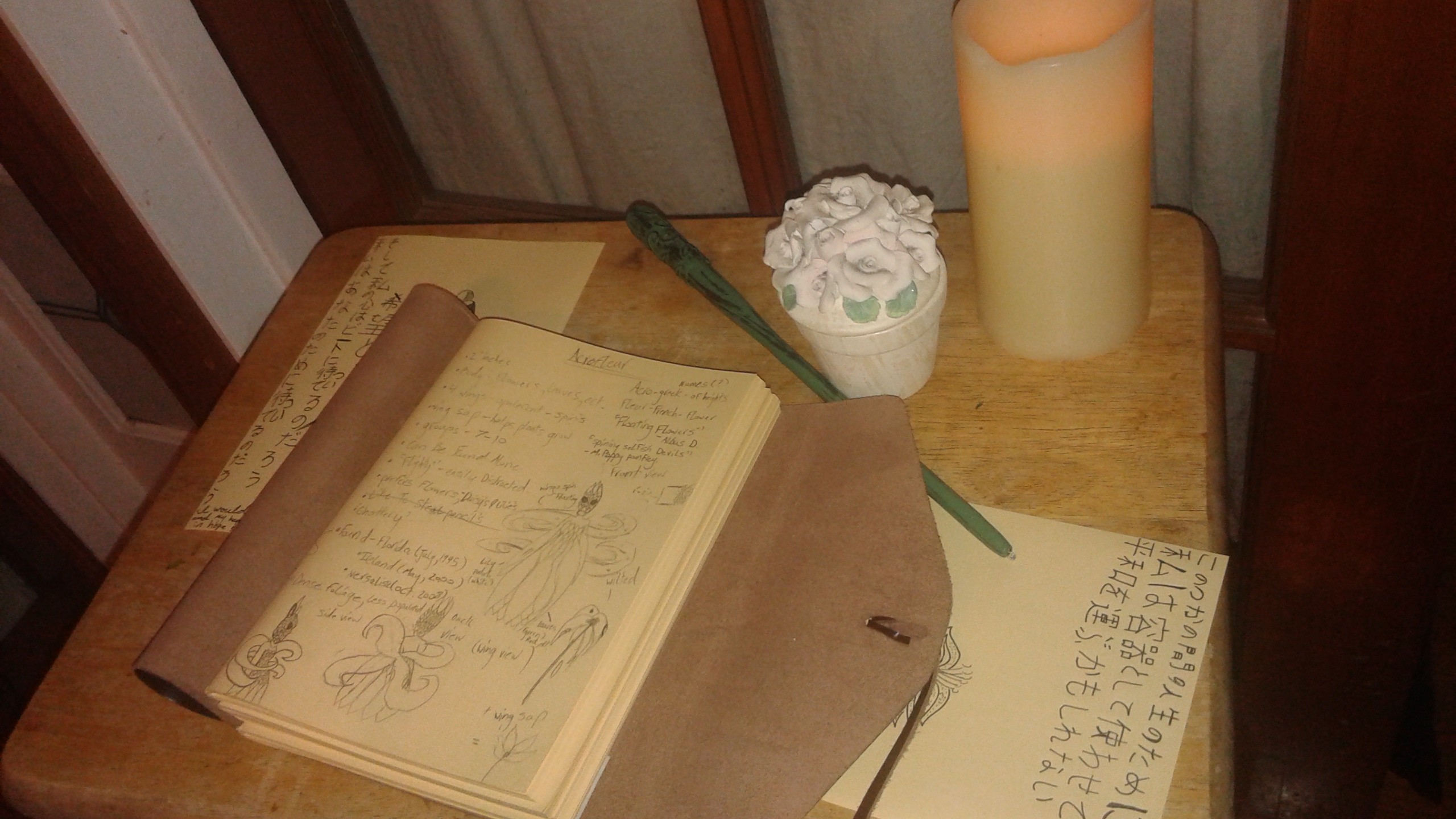
Thank you again for all your amazing entries, and thanks to Warner Bros. for helping us host this giveaway – it was so much fun! We hope to host another giveaway soon, we’ve loved interacting with you all and seeing your talents.
Let us know which entry was your favourite in the comments!


